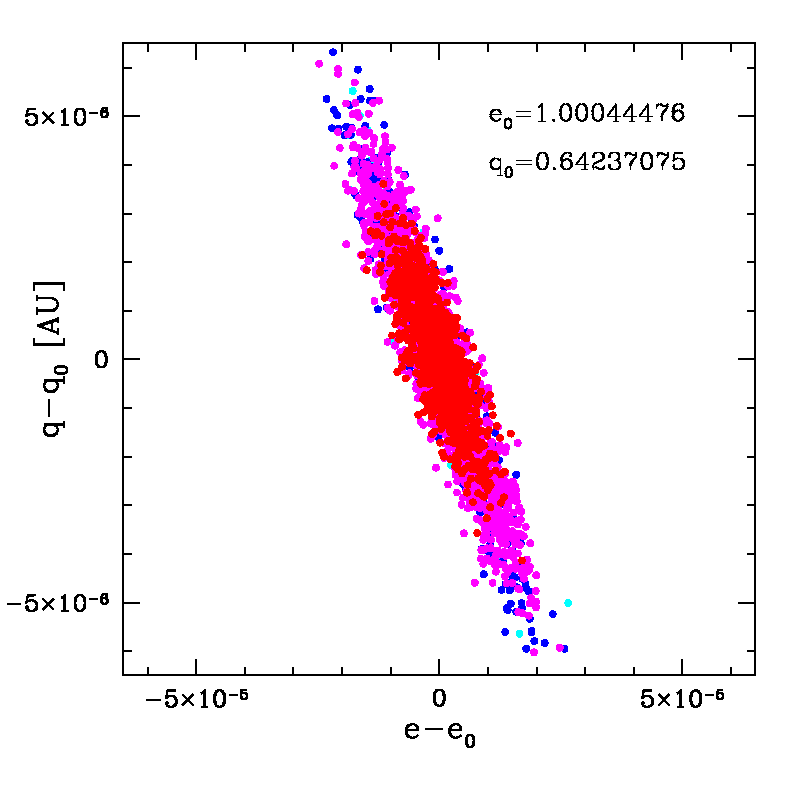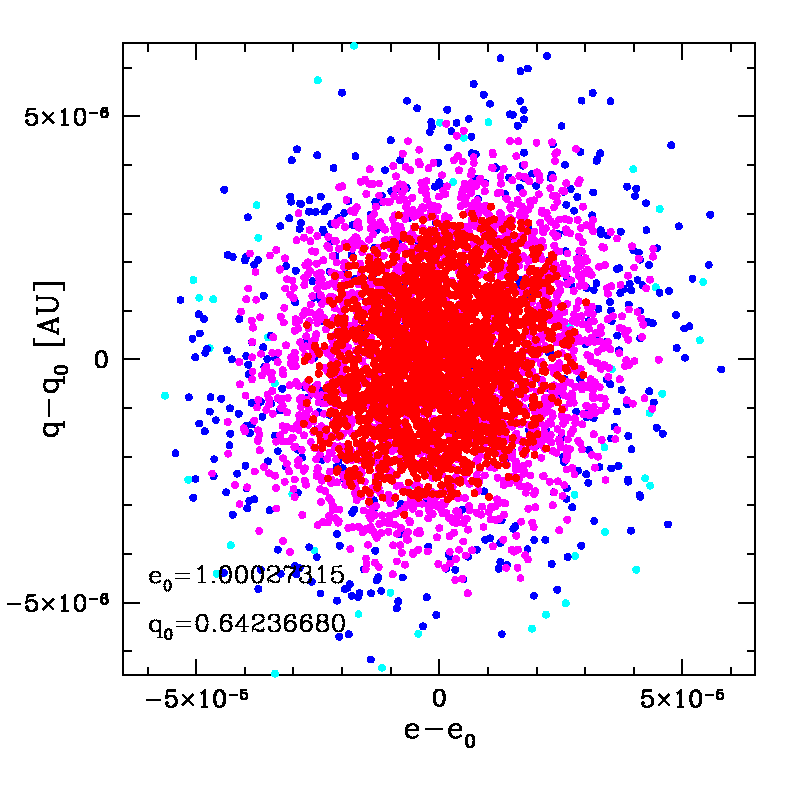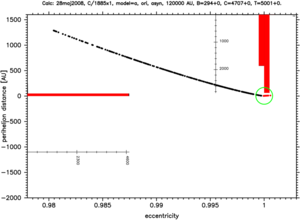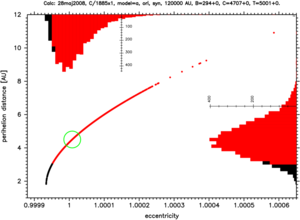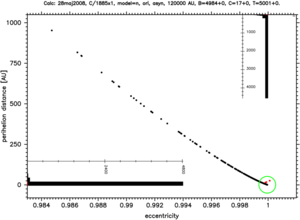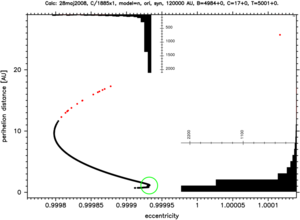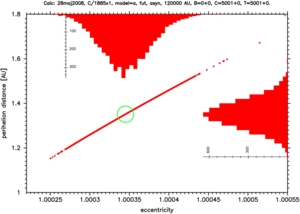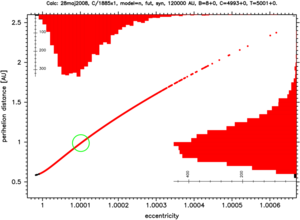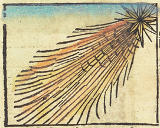Nongravitational nominal solution
Observational arc: 1885 12 02 - 1886 07 20 Number of observations: 228 RMS: 3.58 arcsec (390 residuals used, 14% rejected residuals )
Heliocentric osculating orbit
Epoch Perihelion time q e ω Ω i
1886 04 04 18860406.454383 0.64236680 1.00027315 126.588371 37.963059 82.628566
± 0.000285 0.00000206 0.00002319 0.000120 0.000094 0.000459
NG parameters:
A1 = ( 2.3366 ± 0.2953 )×10-8 AU/day2
A2 = (-0.28794 ± 0.16058)×10-8 AU/day2
A3 = 0 (assumed)
Barycentric nominal original orbit (at 250 AU from the Sun)
Epoch Perihelion time q e ω Ω i
1588 01 17 18860405.846922 0.63999379 0.99996093 126.681400 38.551189 82.761269
± 0.000595 0.00000574 0.00001099 0.000644 0.000093 0.000459
1/aori = (61.04 ± 17.17)×10-6 AU-1
Barycentric nominal future orbit (at 250 AU from the Sun)
Epoch Perihelion time q e ω Ω i
2182 08 10 18860407.057135 0.64058887 1.00006625 126.522866 38.834611 82.612360
± 0.000133 0.00000783 0.00002647 0.001336 0.000094 0.000459
1/afut = (-103.42 ± 41.33)×10-6 AU-1
In the 17th edition of the Catalogue of Cometary orbits (2008):
Nongravitational orbit (142 obs.) with A1=2.6 10-8 AU/day2, A2=-0.2 10-8 AU/day2
The same comet in some other internet sources:
More details
Starting swarms of VCs...(heliocentric, osculating orbits)
Original and future orbit at the 250 AU from the Sun.
Comet number 1 in the Table: Nongravitational Oort spike comets (26 objects)
| Name | GR (1/a)ori [10-8 AU/day2] | GR (1/a)osc [10-8 AU/day2] epoch [TT] | GR 1/afut [10-8 AU/day2] | RMSGR [arcsec] | NG (1/a)ori [10-8 AU/day2] | NG (1/a)osc [10-8 AU/day2] epoch [TT] | NG 1/afut [10-8 AU/day2] | RMSNG [arcsec] | NG parameters A1 A2 A3 [10-8 AU/day2] tau shift [day] | |
| 1 | C/1885 X1 Fabry weighting | -2.73 ± 11.28 | -692.38 ± 11.51 1886 04 04 | -256.73 ± 11.28 | 3.92 | +61.04 ± 17.17 | -425.22 ± 36.10 1886 04 04 | -103.42 ± 41.33 | 3.58 | 2.3366 ± 0.2953 -0.2879 ± 0.1606 |
Note: in the following plots black denotes returning clones while red denotes escaping ones.The nominal solution is located at the center of the green circle. Each plot have a header where date of calculation and some other parameters are coded. Also numbers of returning (B=shown+omitted), escaping (C=shown+omitted) and all (T=shown+omitted) Vcs are shown.
Past orbits, at previous perihelion for the returning VCs :
Past orbits with A2 fixed:
Future orbits, at next perihelion for the returning VCs:
